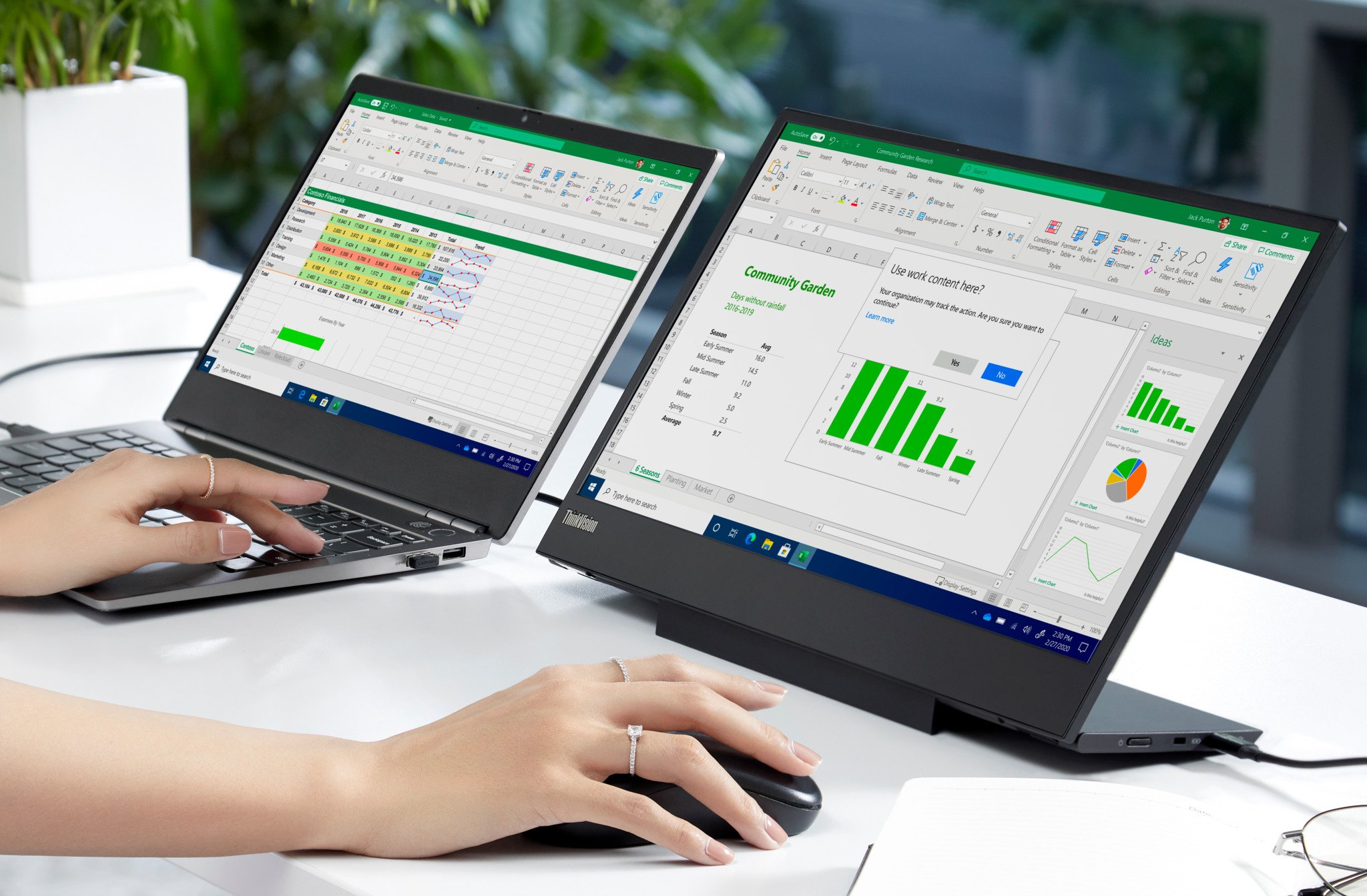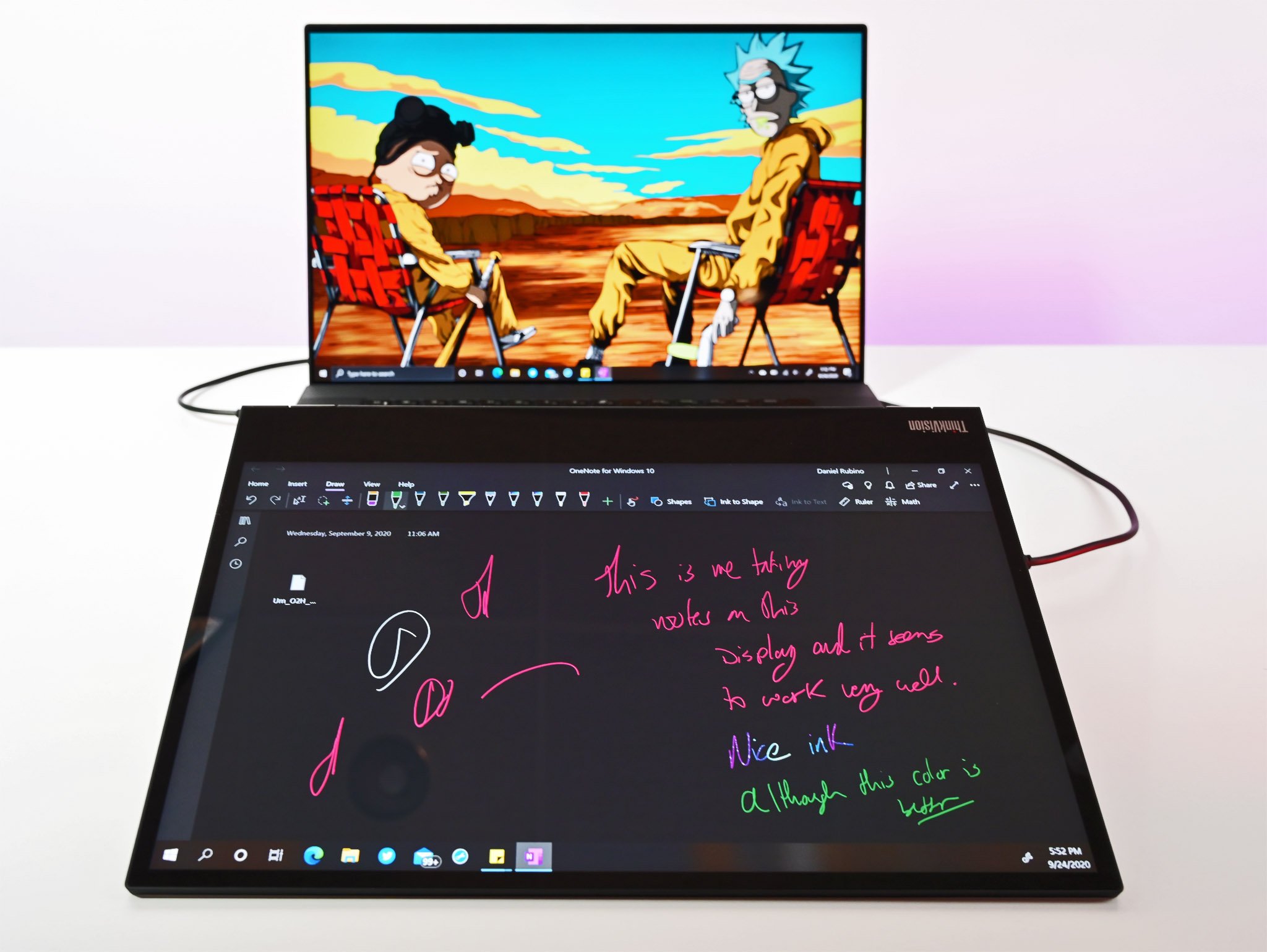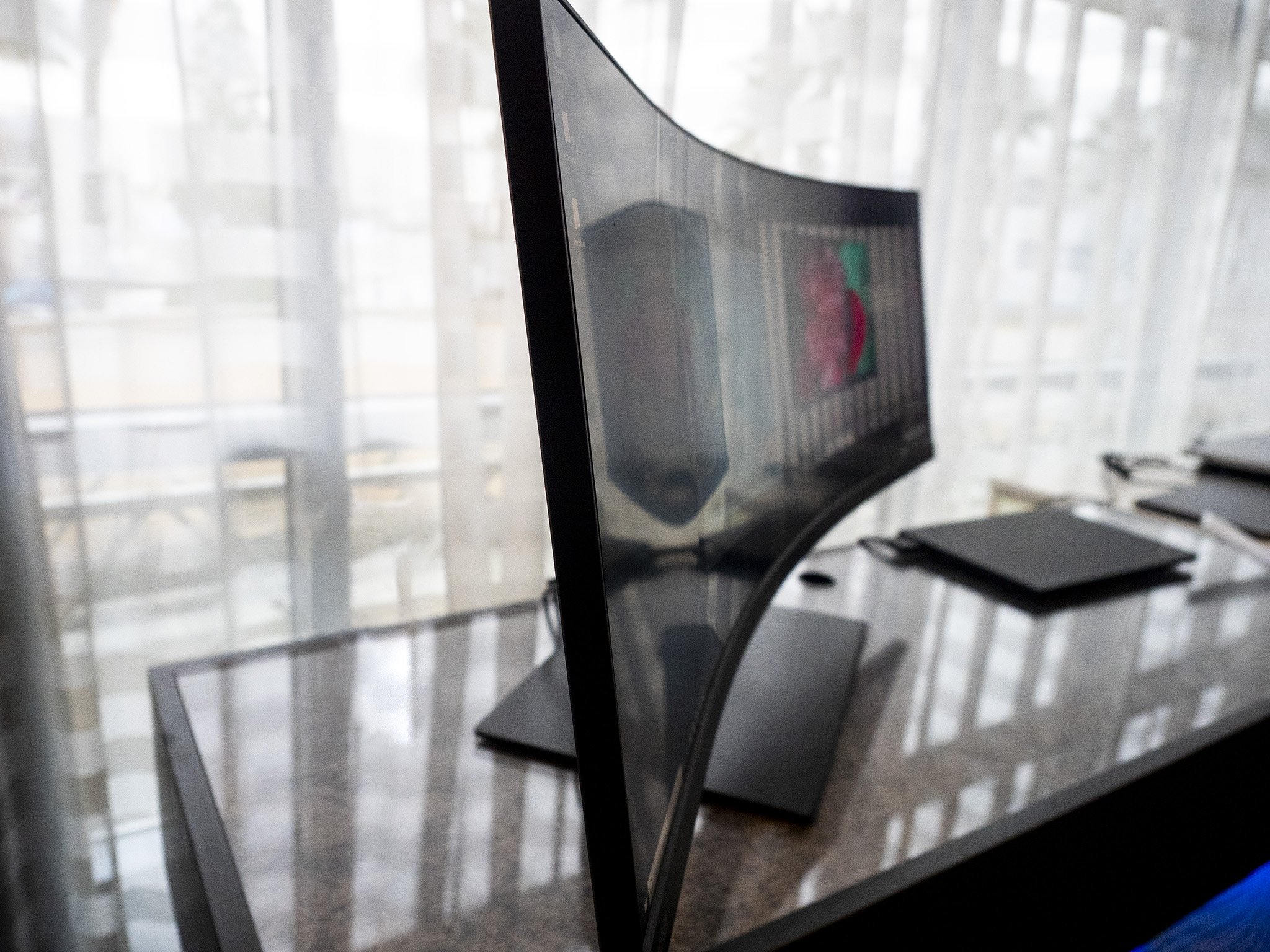Take a peek at what's next.
The future of work is hybrid and remote. As all of humanity has seen due to the ongoing pandemic, every day relies more on PCs and effective communication over vast distances. Therefore, technology needs to rise to the occasion and provide people with the tools to work effectively remotely — a raised bar Lenovo is acutely aware of and keen on meeting.
The company already has devices designed to help with remote challenges, such as the ThinkVision M15 mobile monitor, which enables anyone to turn their laptop into a dual-monitor setup for enhanced productivity anywhere. But there's more to Lenovo's strategy than just stitching screens together; the company has a grander vision for the future of displays.
I spoke with Stefan Engel, Lenovo's VP & General Manager of Visuals Business, to learn more about how his company plans to stay ahead of the curve and help a remote world stay connected.
The state of the monitor game
I asked Engel about Lenovo's current outlook on future tech and support for remote work. In response, he provided not only his own insights but also key figures and metrics. "In Lenovo's recent research, we saw that 83% of IT decision-makers anticipate some form of a hybrid working model, even after COVID is no longer a concern," he said, citing his company's "The Future of Work and Digital Transformation" research.
As a result, Engel and Co. intend to keep inventing along the same lines that brought about the ThinkVision M15. "We envision light mobile monitors with multiple conveniently placed I/O choices as the smarter solution for switching between devices and locations for work and play," he said, explaining that today's work-anywhere culture means that people such as content creators and business travelers need new monitor tech, which has exposed a gap in the existing market.
How Lenovo intends to evolve the monitor sector involves a few core technologies: USB-C hubs for easy connections, smart IoT, Mini LED backlights, Crystal Sound Display for enhanced audiovisual capabilities, and low blue light technology to keep monitor activities easy on users' eyes.
But there are other elements of Lenovo's technology plans that push the boundaries in less anticipated, and arguably more exciting, directions. For example, smarter connections. "A good example of Lenovo Visuals' focus on hassle-free connectivity is just underway with Motorola's new 'Ready For' platform," Engel stated. "Soon, with just a scan of a QR code and Miracast connection, your full featured Motorola smartphone is capable of a smart wireless connection and up to 4K resolution at a high 60Hz refresh allowing your phone's handset to be used as an input device for better gameplay or multitasking."
Engel also looks forward to the potential offered by sensor technology. The ThinkVision T27hv Monitor already has a human presence detection sensor that will put the device to sleep to save energy if it doesn't notice a person facing it, but Lenovo may very well take that tech further. In the cards are utilities like "sensors that recognize the ambient light surrounding the monitor and adjust its brightness accordingly, or sensors that auto trigger volume adjustments based on background noise levels," according to Engel. The next evolutions of features such as Lenovo Artery and ThinkColor are also in the works.
But, with all that said: What's the next big leap in the best computer monitor tech?
Roll into the future
Depending on what kind of consumer you are, one or both of the next two items discussed will likely be a game-changer for your personal computing activities. One is the notion Engel raised of a truly wireless monitor experience. "One aspect of meeting the degree of portability we foresee in future monitors is whether user demands will require moving away from cables entirely — we're not there just yet," Engel said, leaving the door open for when said innovation might hit the mainstream.
And the other big forecast for the future from Engel and Lenovo was rollable, flexible monitors. "Developments we anticipate in the coming years are rollable or flexible monitors," he said. When asked about Lenovo's plans and when we all might see the company's rollable efforts, Engel had this to say:
"The initial debut of rollable PC screens that are not yet portable confirmed a collective desire for new flexible technology, so while I can't comment on the timing and emergence of truly 'pop-up' monitors, I would agree that portability has been and will continue to be a catalyst for future designs of new mobile monitors — and we have already begun meeting the public's need with our early product offerings."
Read into those comments what you will. For now, only one thing's certain: Someone is going to bring rollable, wireless monitor tech to the mainstream in the near future. It may very well be Lenovo. With Lenovo Tech World coming up on Sept. 8, 2021, we'll all have to wait and see what this year's slate of goods has in store.



No comments: